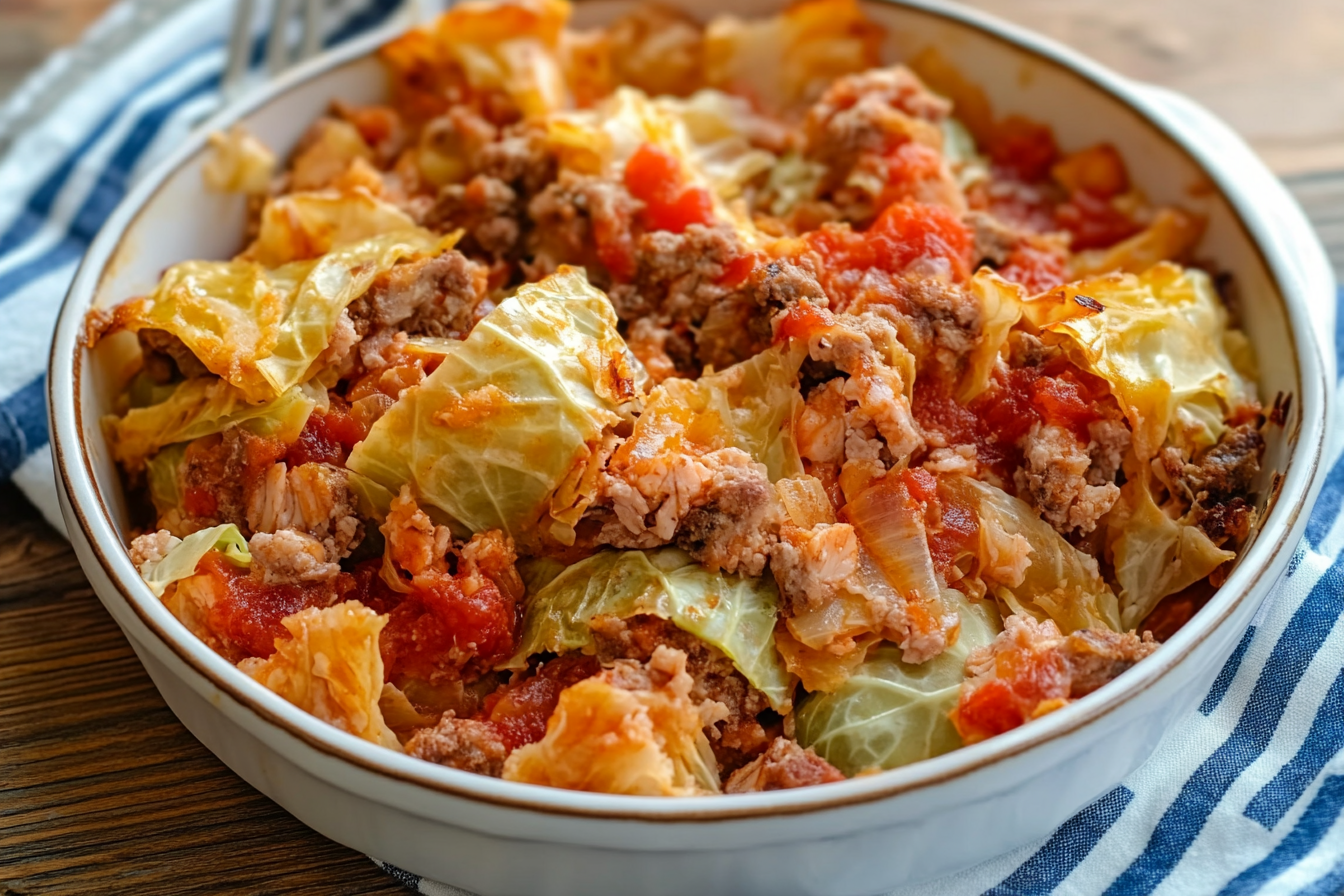There’s something timeless about the humble cabbage roll. Whether served at family gatherings, shared during cultural celebrations, or simply made as a weeknight comfort food, cabbage rolls have a heartwarming way of bringing people together. But the traditional process of individually rolling each leaf can be a bit daunting, especially for home cooks who are short on time. Enter the cabbage roll casserole: a streamlined, layered version of the classic dish that retains all the robust flavors of the original without the meticulous assembly. This recipe transforms the labor-intensive preparation into a deliciously easy experience while still celebrating everything that makes cabbage rolls so beloved.
To understand the heart of a cabbage roll casserole, it helps to first appreciate the dish it derives from. Traditional cabbage rolls, known in Eastern European cuisines as golabki in Polish, holubtsi in Ukrainian, and sarmale in Romanian, typically consist of seasoned ground meat and rice wrapped tightly in softened cabbage leaves, then baked in a tangy tomato sauce. The rolls are often simmered to tender perfection, allowing the flavors to meld in a comforting harmony. The cabbage roll casserole takes this concept and deconstructs it: instead of rolling each cabbage leaf, layers of chopped or shredded cabbage alternate with a rich filling of meat, rice, and sauce. The result is just as satisfying, with each bite offering the perfect balance of textures and flavors.
Creating the perfect cabbage roll casserole begins with the ingredients, many of which are pantry staples. Ground beef is the protein of choice in this dish, though ground turkey or lamb can also be used for a different flavor profile. It’s important to choose a lean but not fat-free cut, as some fat helps keep the casserole moist. For the rice, long grain white rice is traditional, but brown rice or even quinoa can be substituted for added nutrition and fiber. The cabbage, of course, is the star of the show—green cabbage works best, as it becomes tender yet retains some structure during baking. You’ll also need a flavorful tomato sauce, garlic, onions, herbs, and a few spices to round out the flavor.
When preparing your cabbage roll casserole, timing and layering are everything. First, the cabbage needs to be chopped and softened slightly—either by blanching it in boiling water or sautéing it until just wilted. This step is crucial because it prevents the cabbage from remaining too crunchy after baking. Meanwhile, the ground meat is browned with diced onions and garlic, creating a savory base. Once the meat is cooked through, it’s combined with uncooked or par-cooked rice, depending on the method you choose. Then comes the assembly: in a large baking dish, alternate layers of cabbage, meat mixture, and sauce until all the ingredients are used, finishing with a generous layer of sauce on top. This ensures the casserole stays moist and flavorful throughout baking.
The magic truly happens in the oven. Covered and baked at a moderate temperature—around 350°F (175°C)—the casserole slowly transforms as the flavors meld together. The sauce soaks into the rice and meat, while the cabbage becomes meltingly tender. Depending on your oven and the thickness of your layers, baking time can range from 60 to 90 minutes. About ten minutes before it’s done, you can uncover the casserole and sprinkle some cheese on top if desired—mozzarella or cheddar add a creamy contrast to the savory layers beneath.
Serving your cabbage roll casserole is as rewarding as preparing it. This hearty dish stands beautifully on its own, but it also pairs well with crusty bread, a dollop of sour cream or Greek yogurt, and a crisp side salad to balance the richness. For a touch of acidity, try a splash of vinegar or lemon juice over the top before serving—this brings out the brightness of the tomato and complements the cabbage wonderfully.
One of the beauties of this casserole is its adaptability. You can easily make it vegetarian by replacing the meat with lentils, mushrooms, or a plant-based ground meat substitute. Add some chopped bell peppers or shredded carrots for extra color and sweetness. If you’re looking to boost the flavor even further, mix in a handful of fresh herbs like dill or parsley. The tomato sauce can also be jazzed up with a splash of Worcestershire sauce, a pinch of smoked paprika, or even a spoonful of harissa for some heat.
From a nutritional standpoint, cabbage roll casserole is surprisingly balanced. Cabbage is low in calories but high in fiber and vitamin C, while rice and meat provide a good source of protein and energy. Opting for brown rice increases fiber content, and adding more vegetables boosts the dish’s overall nutrition profile. Using a lean meat or plant-based protein also makes this meal more heart-healthy.
Storing leftovers is simple and convenient. Cabbage roll casserole keeps well in the refrigerator for up to four days and can be frozen for up to three months. To freeze, let it cool completely, then transfer to an airtight container. When ready to eat, thaw overnight in the refrigerator and reheat in the oven or microwave until hot throughout. This makes it a perfect dish for meal prepping or planning ahead for busy weeknights.
**Whether you’re new to cabbage rolls or a seasoned fan of this traditional dish, the casserole version is a must-try. It retains all the hearty charm and satisfying flavor of the classic recipe while simplifying the process and offering room for creativity. It’s the kind of meal that brings comfort and nourishment in every bite—a dish that welcomes variation, encourages sharing, and never fails to satisfy. From its Old World roots to your modern kitchen, cabbage roll casserole is more than just an easy weeknight dinner—**it’s a celebration of tradition made simpler, and tastier, than ever before.

